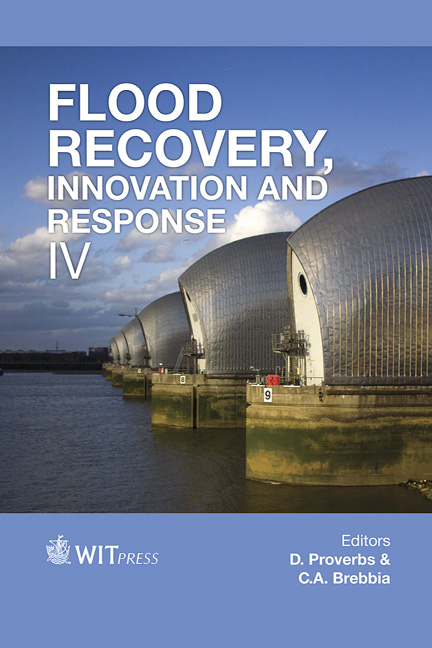Risk Management And Emergency Response For A 300 Km2 Sub-sea Level Area With A Million Citizens Against Extreme Storm Surge And Flood Due To The \“Super Ise-Bay Typhoon”
Price
Free (open access)
Transaction
Volume
184
Pages
12
Page Range
251 - 262
Published
2014
Size
2,780 kb
Paper DOI
10.2495/FRIAR140211
Copyright
WIT Press
Author(s)
T. Tsujimoto, M. Igarashi & K. Kobayashi
Abstract
There is a land of 300 km2 lower than sea level with a million citizens facing Isebay in the central part of Japan, which is located on a possible route of typhoons and is exposed to a risk of serious storm surge and flood. This area was attacked by storm surge by \“Ise-bay Typhoon” in 1959 and more than 5,000 people were killed. In spite of a protection infrastructure constructed in this half decade after the event, recent climate change may cause extreme typhoons exceeding the level of protection and response, and resilience against such an enormous disaster has not yet been prepared. We have made efforts to prepare an action plan of risk management and emergency response since 2005. Once an extreme storm surge breaks the protection infrastructure, a wide area will be inundated with various risks and drainage from there will take a long time. Meanwhile, with recent progress in weather forecasting of magnitude and course of big typhoons, we may have a lead time of 36 hrs. We introduce 4 phases: Risk management before typhoon arrival (Phase 0), emergency response within 0– 72 hrs (Phase I) and successive stages (Phases II and III). In particular, we study how to make a wide preliminary evacuation possible with proper operation in Phase 0. We have organized a working group to support the authority including all the stakeholders related to disaster mitigation to make an action plan of risk management and emergency response.
Keywords
typhoon, storm surge, catastrophe management, risk management, emergency response.





